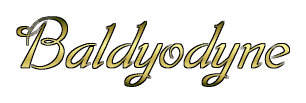C1 (A & B) Air Variable,
duel
gang,
15-500 pF each side, ceramic insulation
C2
Air Variable, single gang 15-497 pF, TRW, silver plated,
ceramic insulation
C3
Air Variable, single gang 15-497 pF, TRW, silver plated,
ceramic insulation
C4
Air Variable, trimmer. 59 - 131pf, ceramic insulation
C5
.1uf capacitor
C6
.47uf capacitor
S1 (A& B) Rotary
Switch, 2 pole
2 position, silver plated, ceramic insulation
S2
Rotary Switch, 1 pole 6 position, silver plated, ceramic insulation
S3
Rotary Switch, 1 pole 12 position, silver plated, ceramic insulation
S4
Rotary Switch, 1 pole 12 position, silver plated, ceramic insulation
L1
Tuner Coil, 660/46 Litz wire, air coil,
L2
Tuner Coil, 660/46 Litz wire, air coil,
L3
Trap Coil, Amidon FT-82-61 Ferrite Toroid Core, #24 magnet wire,
bifilar wound, 50-odd spaced turns, more or less, depending on the V/C
being used, 10 turns wound from one end of the other coil windings.
L4
Coupling Coil, Amidon FT-82-61 Ferrite Toroid Core, 16 turns of
#24 magnet wire on each side, tapped every turn starting from
one
side for a total of 10 taps.
L5
Detector Coil, Amidon FT-82-61 Ferrite Toroid Core, 50-odd spaced
turns, more or less, depending on the V/C being used
D1
R1
250k ohm pot
H1
RCA "Big Cans" from Decktalker unit
T1
UTC A27 transformer

